Did you know that sheep are notoriously picky eater? These woolly creatures need different kinds of hay than other farm animals, like horses or cows. Sheep prefer nutritious hay with more leaf than stalk. In this article, we’ll go over what hay is, how it’s made, and how to choose the best hay for sheep – nutritious forage that will last a long time when stored correctly in the barn.
What is Hay?
If you’re not from the countryside, you are probably unsure what hay is and how it differs from straw. The main difference between hay and straw is that hay is comprised of legumes while straw is a byproduct created during the grain harvest.
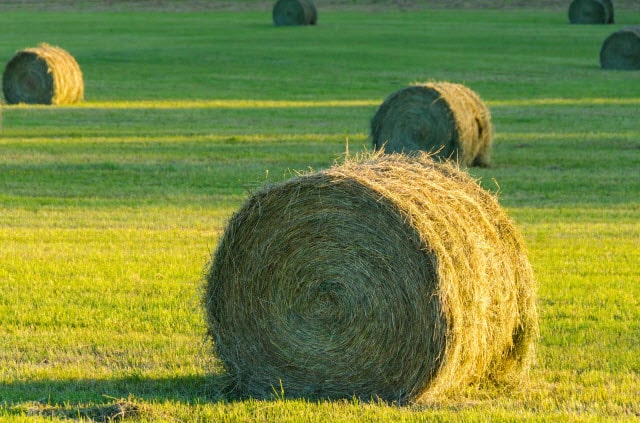
While straw is never used for feeding livestock, hay is. Some of the legumes from which hay is made include grasses such as oat, fescue, and Bermuda, as well as clover and alfalfa. That is why hay is green. There are several kinds of hay that are used for feeding livestock.
It’s important to realize that different types of hay are appropriate for specific farm animals. The kind that’s appropriate to feed to a specific animal depends on that animal’s nutritional needs. Sheep have their own special nutritional needs and you must remember these when deciding on their diets, including what kind of hay to feed them.
One circumstance in which hay becomes an especially important part of the sheep, horse, goat, or cow diet is when there is a lack of pasture for grazing.
How is Hay Harvested?
Plants used for making hay must be harvested while they’re still alive. Usually, they should be cut prior to the seed maturing.
After that, the hay is dried. Usually this is done right in the field over the course of a few days. The hay is periodically turned with a tedder before being raked into neat rows prior to baling.
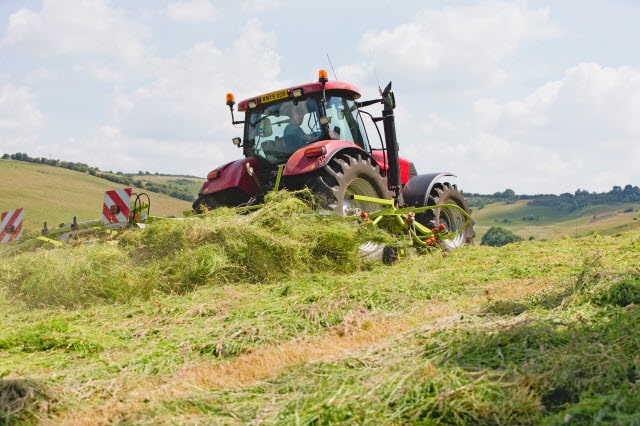
Remember how important it is to make sure that the hay is completely dry. It cannot have too much moisture in it, as this can lead to mold and make the hay inappropriate to feed to the animals.
Not only that, large amounts of moisture in a hay bale make it more likely to catch on fire. When the hay starts decomposing due to the moisture, it heats up. If there is any sort of spark coming from outside, the hay will likely catch fire.
What Kinds of Hay Do Sheep Prefer?
Sheep don’t like coarse hay. Make sure the variety of hay you give your flock is leafy and fine. Leafy alfalfa or immature grass hay will usually attract sheep. Hay made with a legume harvested during growth is usually best for lambs, as it will provide finer stems. Mature sheep, on the other hand, are usually fine with a high-quality grass gray.
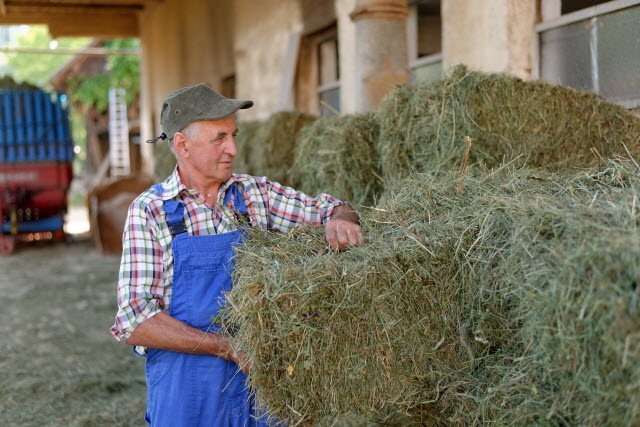
You should feed your sheep their hay in a clean, dry place, like in a feeder. A round bale feeder is a popular choice. Never try to give your sheep hay on muddy or wet ground, as this will usually lead to a large amount of hay being wasted.
There are several different kinds of hay. There are hays made of:
- Legumes
- Grass
- Mixed legume and grass
- Cereal grain straw, like oat hay
Among grass hays, some of the most common are bluegrass, orchard grass, brome, and timothy. In some regions of the United States, ryegrass, reed canary grass, fescue, and Sudan grass are prevalent.
How to Choose a Nutritious Hay for Sheep?
Always remember the nutritional needs of your flock when deciding on the components of their diets. As with any other kind of animal, it’s important to talk to your vet to get details, especially when individual animals may have different needs. There are certain general rules about the basics of sheep nutrition.
For ewes that are not pregnant or are in early to middle stages of gestation, a grass hay of average quality is usually sufficient. Wethers and mature rams will usually find this to be enough, as well. If you have ewes in late gestation, they should probably be given a mixed grass-legume hay. This will boost the amounts of calcium and other necessary minerals that they need.
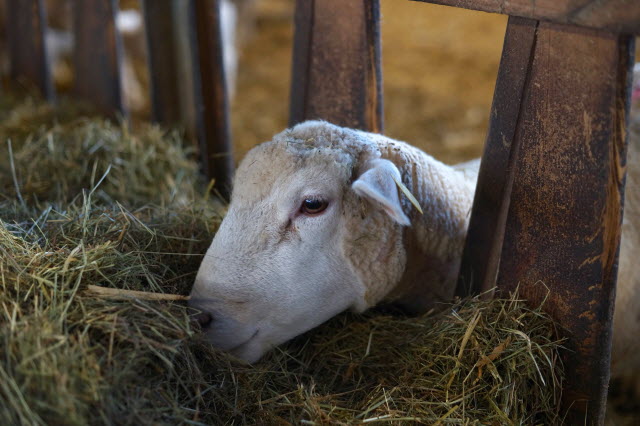
Pure legume hays (alfalfa is an important example) is an especially good choice for ewes that are lactating. That is because of its maximal levels of calcium and protein. It’s important to check the general hay quality before giving it to your sheep. Don’t make any assumptions and make sure of what kind of product you are getting.
Factors Which Can Affect Hay Quality
The quality of hay can vary based on a number of conditions, including:
- Stage of maturity at harvest
- Moisture
- Weather conditions at harvest
- Growing conditions
The nutritional value of hay is impacted by:
- Soil fertility
- The plant species
- Curing time
- Harvesting methods
Different harvesting methods include whether the hay was crimped to dry more quickly to have less leaf and nutrient loss while drying, or if it was conditioned.
If you are checking the condition of alfalfa hay, try what some farmers call the snap test. If you find that the hay is able to bend over easily when in your hand, it has a relatively low amount of fiber and will be easier for animals to digest than if you find the stems snap when you bend them.
What to Look for When Buying Hay for Your Sheep
Before you buy bales of hay, always inspect them. Check the leafiness, texture, color, and maturity. Make sure there isn’t any mold, discoloration caused by weathering, fermentation that has caused heat (due wet hay), foreign material such as sticks, rocks, wire, or baling twines, dust, or weeds.
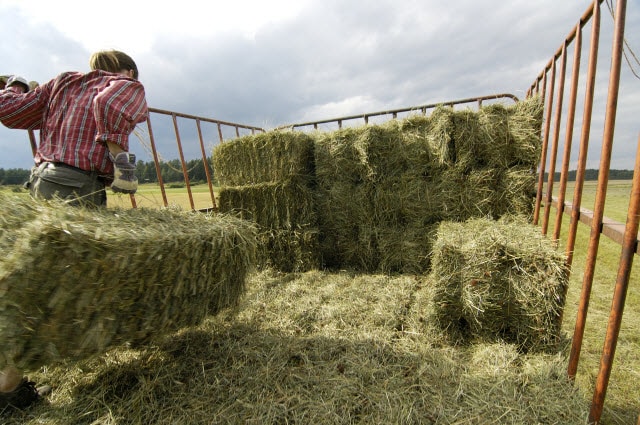
You will have to look inside of the bales in order to properly examine them. Don’t just stick with looking at the outside. It’s possible that the outer edges of the hay may be faded just because of conditions like sun exposure, but that the interior is still as green as it should be.
You can determine quite a bit about the freshness of a hay bale just by smelling it. If you detect any moldy, sour, or musty smells, this is a danger sign. It’s best to purchase hay that has been in a hay shed or under a tarp, protected from rain.

